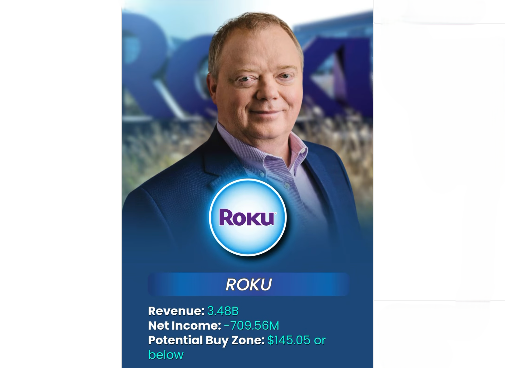Roku stock felt like a balloon that had blown up too high and then quietly deflated not too long ago. The stock fell over 80% from its peak after riding the wave of pandemic-driven streaming. It was a brutal correction that left institutional backers dubious and many retail investors sidelined. However, Roku appears to be making a strong resurgence, and this time, the fundamentals may finally be catching up with the optimism, much like that unlikely underdog that finds its rhythm again.

A Comeback Based on Strategy Rather Than Hype
The foundation of Roku’s recent comeback is something more resilient than the speculative frenzy of previous years: strategy and execution. Although it’s simple to write off any tech stock recovery as market noise, Roku’s upgrades are remarkably deliberate and surprisingly well-organized. The management has made deliberate cost reductions, aggressively optimized ad technology, and heavily relied on astute alliances that are already yielding benefits.
Instead of sprinting, their strategy is to build like a marathoner, gradually increasing speed where it counts. Anthony Wood, the CEO, has changed the emphasis from growth at all costs to platform efficiency and operating leverage, which are far more sustainable.
| Metric | Value (as of Q1 2025) |
|---|---|
| Stock Ticker | ROKU |
| Market Capitalization | $11.2 Billion |
| Price-to-Sales (P/S) Ratio | 3.4 |
| Revenue (TTM) | $3.8 Billion |
| Net Income | -$150 Million |
| Active Accounts | 81.6 Million |
| Streaming Hours | 29.9 Billion Hours |
| Platform Revenue YoY Growth | +18% |
| Operating Margin | -3.2% |
Advertising Revenue: A Slow Burn That Is Beginning to Shine
The golden goose for Roku has always been advertising, and it’s finally starting to lay those eggs. Roku is gaining market share in connected TV more quickly than competitors expected, even though TV ad budgets are still recovering from economic headwinds.
The entire ecosystem is becoming more sticky thanks to the company’s in-house ad technology, especially its Demand Side Platform (DSP). Due to Roku’s precise targeting and quantifiable performance, advertisers are leaning in rather than just skimming the surface. Although the growth isn’t yet explosive, it is significantly compounding.
OS Dominance, Licensing, and the Battle for Living Room Real Estate
Consider Roku’s operating system (Roku OS) as the largely unseen but vital plumbing that powers your smart TV experience. Additionally, Roku has been covertly installing more of those pipes recently. The Roku OS is being licensed to an increasing number of TV manufacturers, and it is currently the top TV streaming service in the United States in terms of hours streamed.
That is important. It places Roku at the heart of a clean loop ecosystem that includes hardware, content, advertising, and user data. Such positioning is uncommon—and potentially very profitable—in the attention economy.
Although Wall Street remains cautiously optimistic, the smart money is keeping an eye on it
Though they haven’t thrown confetti yet, analysts’ opinions have changed from skepticism to cautious optimism. In early 2025, a number of companies raised Roku’s outlook, citing better margins, lower losses, and indications of growth. While long-term growth investors are covertly acquiring shares, hedge funds that reduced their holdings during the downturn are beginning to sniff around once more.
Whether Roku can lead the next chapter of the streaming economy, where connected TV is the norm rather than the future, is the real question, not if it can survive.
Retail Investors Have Rekindled Their Faith
Roku is more than just a ticker symbol to regular investors. It serves as an example of how tech companies can be resilient and re-aligned. Once riding a COVID-fueled boom before a severe crash, the company is now making a comeback—not through publicity, but by working hard.
Retail investors are also taking notice. Forums such as Reddit’s r/stocks are once again buzzing, and trading volume is slightly increasing. Though cautious, there’s a feeling that Roku’s best days may still be in the future, particularly if its flywheel model keeps gaining traction.
What Will Happen to Roku in 2025 and Later?
The stock might not only rebound if Roku keeps up its execution; it might even redefine its category. Roku isn’t trying to become the next Netflix; rather, it wants to be the infrastructure that supports them all with its platform-first approach, growing ad business, and global TV OS goals.
It’s a tale of rebirth in progress. Like a river slicing through stone, it is subtly strong without being ostentatious.
